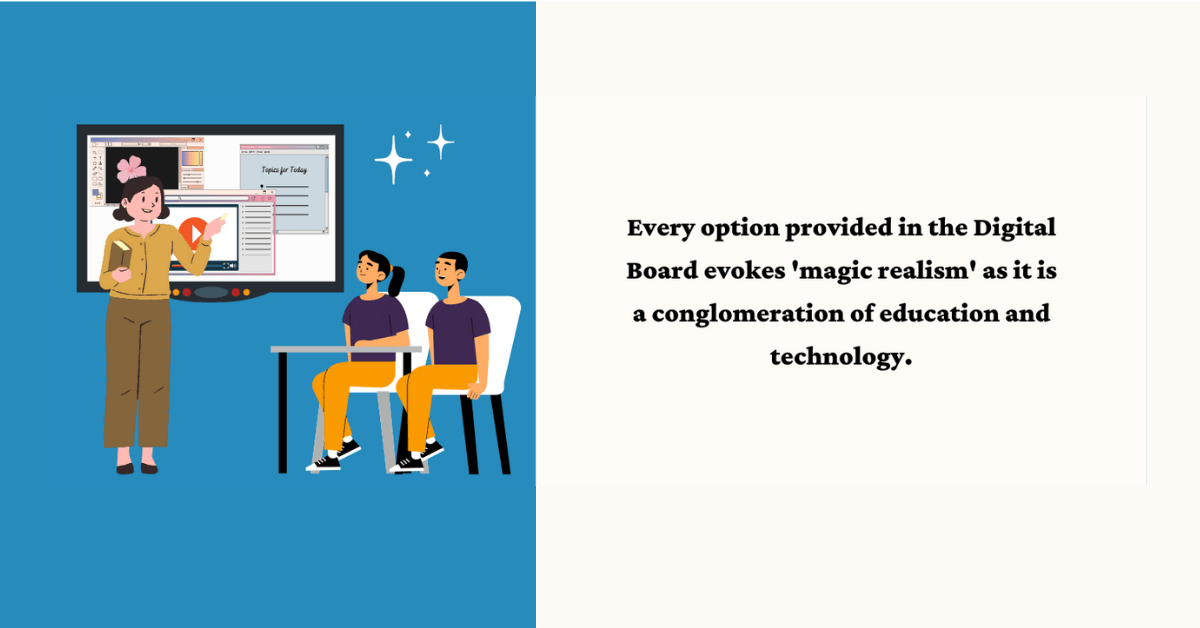You may write me down in history
With your bitter, twisted lies,
You may tread me in the very dirt
But still, like dust, I’ll rise.
– Maya Angelou
These lines always make me feel and understand that in life uncertainties are always overcome by natural instincts. In the era of ‘Covidomonization’, the education sector has witnessed a sea of change in teaching and learning pedagogy. The superstars of erstwhile education (blackboards, green boards, and whiteboards) lost their charm and waded into wilderness. It is no secret that amidst the pandemic, they were soon replaced by laptops and desktops and online teaching was in vogue. But there was something amiss about them. This equipment did not have its finger on the pulse of education and much-needed verve was missing. So, it was time to welcome hybrid teaching with vim and vigor.
At first, the very thought of hybrid teaching used to make my toes curl. I was incredulous about the fact that it was possible to teach students online as well as offline simultaneously in a class. Sometime, even technostress used to overpower me. In November, to make us comfortable with hybrid teaching, we were introduced to a new digital technology and the future of education – the Digital Boards. The first training session was online. Though I was trying to learn the steps and was noting down the important points in my journal, I felt like everything was upside down for me. After the second and third training sessions, there were multiple advantages of the sensor board that were hovering over my mind. The Digital Boards seemed like a conundrum to me which made me wonder about its true sense.
Finally, the D-day came when the Digital Boards were fixed in classes. The first time, we looked at each other with disdain, as we didn’t know each other well. I started putting my training into practice, unbound by the usual questions and answers in my mind. As I explored the Digital Board, I was able to crack the modus operandi. While taking my first hybrid class, I felt something where real and illusionary came together to take education on an everlasting tide of knowledge and skill. There were some difficult experiences too where I had to practice again and again to avoid impromptu teaching. But finally, the triumphs bought out the throbbing, pulsating heart of the teacher who knew so much about these Interactive Panels for Education.
How are the Digital Boards different than the traditional Class Boards?
Digital Board is an atlas of information interspersed with various teaching tools, which we teachers felt the need to use eons ago. While the whiteboard and blackboard offer a ringside view, the Digital Smart Boards provide the teacher with a lens to maneuver a lesson according to the student’s needs. An inbuilt duster in the Digital Board and the use of a pen and finger to write on it have eliminated chances of chalk dust allergies and respiratory tract infections.
Some of the most useful tools that I found in the Digital Boards are:
1. Insert Tool
One tool in the Digital Board that really caught my attention was the Insert tool. I use this feature to insert images such as parts of a leaf on the Digital Board and annotate them for my students with utmost ease and comfort.
2. Pen Tool
As the name suggests, the Pen tool allows you to handwrite text and draw diagrams and figures in a much simpler way as compared to the traditional chalk and duster. You can use the Pen tool on the digital board in the exact same way you use a Pen on Paper.
3. Splitter Option
There is a bevy of tools available on the Digital Boards, but I am fond of the “splitter option”. This option allows you to split the board into two parts. On one side you can have the board for explanation and on the other side, you display a word document or pdf. This method is extremely useful while doing a revision of a test paper or re-teaching a concept.
4. Shape Tool
The most amazing tools on the Digital Board are the Shape tool. I am really struck by the plethora of options this tool provides. If you draw a tentative shape, it automatically changes into a perfect shape. This tool can transport students into a universe where shapes come to life. The idea of just recognizing the shapes does not fly with kids anymore. They want to know the compelling tale of the “why and how” behind the formation of 3D and 2D shapes. When I first used this tool to explain figures, students were astounded to learn the difference between prisms and pyramids. It is also very easy to teach Angles with the help of these tools.
5. Text Recognition Tool
This is one of the most brilliant tools of the digital board. The history of text recognition tool goes back to the use of OCR (Optical Character Recognition). The text recognition tool recognizes the handwritten text on the board and converts it into digital text. With the help of this digital conversion of text, any form of handwritten content on the boards can be easily used for making documents in a digitized format.
6. Selection Recognition Tool
Though this feature appears simplistic, it is a powerful word recognition tool. In case you need to know the meaning of a word, it directs you to Google or Wikipedia. It is an extremely useful tool for learning new Vocabulary.
It is a fact that with Digital Boards the world of teaching is at your fingertips.
In addition to spotting the benefits of the Digital Boards during Science, Math or Language Classes, I was mesmerized to see drawings and paintings appearing to come to life in the Art Class. Every option provided in the Digital Board evokes “magic realism” as it is a conglomeration of education and technology. My transition from a teacher using a whiteboard and blackboard to a teacher using a Digital Board was not a cakewalk. It is not just a story of defeat, mistakes, and displaying courage in the face of adversity, but also about the feeling of victory. It is pertinent to note that fear of the unknown is always challenging. Change is always unsettling, but those who brave the sea of challenges and uncertainty lay the groundwork for future triumphs.
On this cheery note, I would like to add that the advent of Digital Boards in the teaching-learning process has revolutionized teaching. It gives a euphoric sense of liberation from duster, chalk, and the cumbersome process of moving from blackboard to projector again and again. It has helped me to feel an inner sense of liberation and self-worth while teaching. It has become an extended version of myself as a teacher to bring a difference in the life of students through my teaching. There is, however, another perspective that is so subtle that it reveals only when we are sensitive to its presence. It is a fact that Digital Boards have redefined learning for students. To learn with the help of Digital Boards they need to summon up wonder, enthusiasm, alertness, and curiosity within themselves. It is time for them to broaden their horizon and get truly engaged in learning.

Ms. Jytoshna Dwivedi
CAIE Primary Teacher
I am a CAIE PRIMARY FACILITATOR who is passionate about teaching primary students and writing. Penning down my thoughts on paper brings peace and clarity to my mind leaving any chance of ambiguity about a given situation. In this chaotic world, I take refuge in the world of words.





